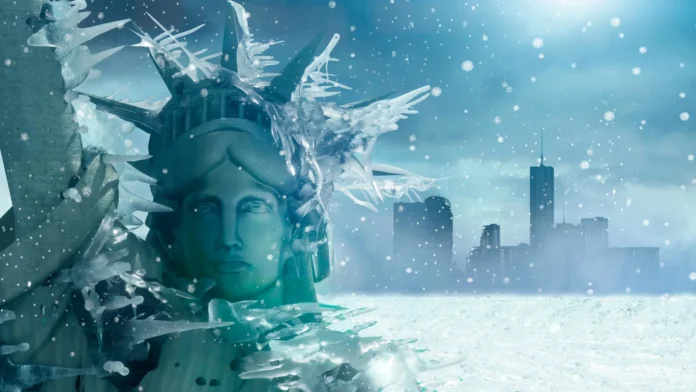"Chilling Insights: How the Polar Vortex Shapes Winter’s Coldest Outbreaks in a Warming World"
Study Reveals How Polar Vortex Patterns Drive Extreme Cold in a Warming Climate
Despite the overarching trend of a warming climate, parts of the United States continue to experience severe winter cold snaps. A recent study published in Science Advances sheds light on this paradox, revealing that specific patterns in the polar vortex—a swirling mass of cold air high in the stratosphere—play a crucial role in steering extreme cold to various regions across the country.
Understanding the Polar Vortex
The polar vortex is a large area of low pressure and cold air surrounding the Earth’s poles. It is typically strongest in winter, when it can become distorted, leading to significant weather changes. Researchers from an international team, including experts from Hebrew University, the University of Massachusetts, MIT, and the Woodwell Climate Research Center, have identified two distinct variations of the polar vortex that influence winter weather in the U.S.
Two Patterns, Two Outcomes
The study highlights two specific patterns within the polar vortex that lead to different cold weather outcomes:
- Westward Shift: This variation pushes the polar vortex toward western Canada, resulting in intense cold in the Northwestern U.S.
- Eastward Shift: This pattern nudges the vortex toward the North Atlantic, unleashing frigid air across the Central and Eastern U.S.
Both variations are linked to changes in atmospheric waves that alter the jet stream, allowing Arctic air to plunge further south than usual.
Recent Trends in Cold Weather
Since 2015, the Northwestern U.S. has experienced an increase in cold outbreaks, a trend that contradicts the general warming observed across the country. The researchers attribute this shift to a rise in the frequency of the westward-focused vortex pattern, which coincides with stronger negative phases of the El Niño/Southern Oscillation (ENSO)—a significant global climate driver.
The findings underscore the complexity of climate change, which does not merely equate to uniform warming. Instead, it can lead to unexpected shifts in weather patterns, resulting in extreme cold events in certain areas even as other regions experience milder winters.
Implications for Weather Forecasting
Understanding the dynamics of the polar vortex is essential for improving long-range weather forecasting. The study’s insights could help cities, power grids, and agricultural sectors better prepare for winter extremes. For instance, the severe cold wave that struck Texas in February 2021, which resulted in significant fatalities and economic losses, can be better understood through the lens of these polar vortex patterns.
Conclusion
The research emphasizes the importance of high-altitude atmospheric conditions in shaping winter weather at ground level. As climate patterns continue to evolve, the ability to predict and prepare for extreme weather events will be crucial for mitigating their impacts on society.
This study was funded by a grant from the U.S. National Science Foundation and the Binational Science Foundation, led by Chaim Garfinkel of Hebrew University and Judah Cohen of Atmospheric and Environmental Research at MIT. The findings not only enhance our understanding of winter weather dynamics but also highlight the intricate relationship between climate change and extreme weather phenomena.
